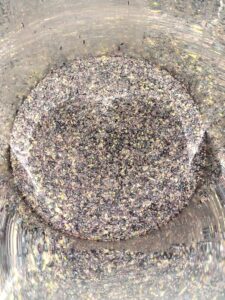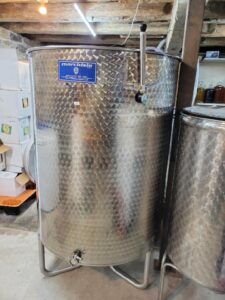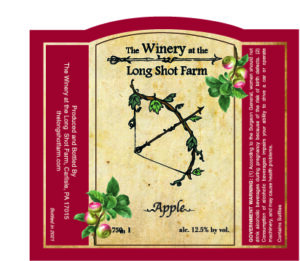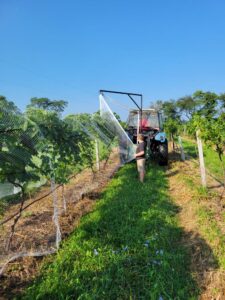Fall is an exciting time at the Winery. With last year’s wine bottled and the harvest rolling in, its onto the new vintages! Concord grapes are one of the first varieties to be harvested. We usually begin picking them in early September. Our concords have already been pressed and gone through the primary fermentation.

 The primary fermentation is the initial conversion of sugars in the grape juice into alcohol and carbon dioxide using yeast. The wine is then syphoned or “racked” into the secondary container. This racking is important. Sediment falls out of the fermenting juice, which is primarily composed of spent yeast and grape pulp. We don’t want the wine to rest too long on the sediment as this can impart off flavors into the final wine. Wine typically spends 1 week in the primary fermentation.
The primary fermentation is the initial conversion of sugars in the grape juice into alcohol and carbon dioxide using yeast. The wine is then syphoned or “racked” into the secondary container. This racking is important. Sediment falls out of the fermenting juice, which is primarily composed of spent yeast and grape pulp. We don’t want the wine to rest too long on the sediment as this can impart off flavors into the final wine. Wine typically spends 1 week in the primary fermentation.
The concord wine will rest in the secondary tank, with occasional rackings, until it is ready to be bottled. In the meantime, we will continue to harvest, crush, and process our other varieties.


 The spice blend is a little different than previous years but it smells glorious and we expect to produce a small batch of
The spice blend is a little different than previous years but it smells glorious and we expect to produce a small batch of 








